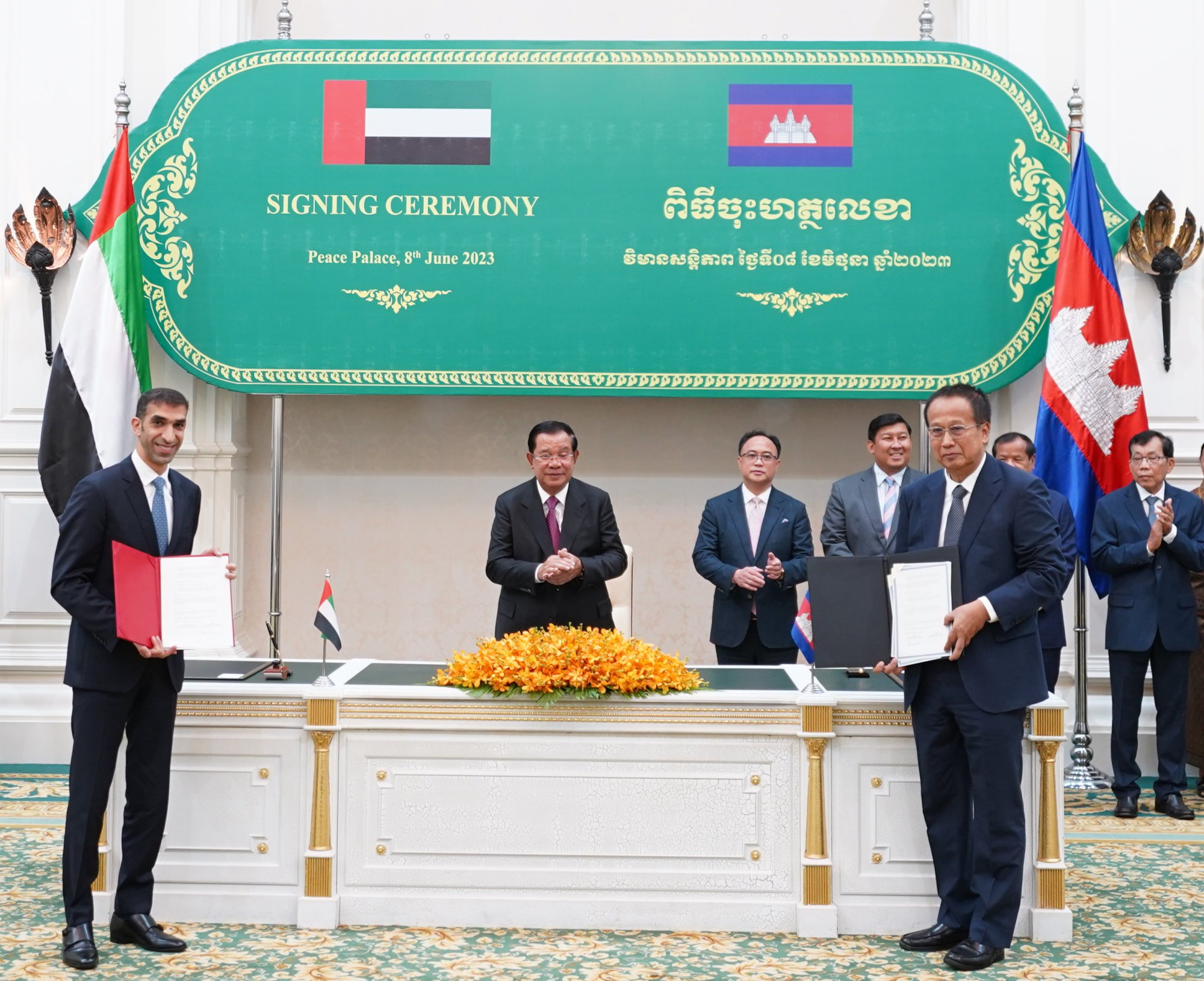
UAE builds ‘corridor of opportunity’ with Asean trade deals as it tries to lure China investments
- The UAE’s trade minister has said the country is ‘building a corridor of opportunity’ between the Gulf states and Southeast Asia
- It wants to leverage its comprehensive economic deals with Asean members so it can eventually cooperate or even co-invest with China, an analyst said
“The motivations behind the UAE’s reach into Asean should be viewed much more broadly as its strategic aims in attaining, as an Arab country, both regional and global leadership,” said Clemens Chay, a research fellow at the National University of Singapore’s Middle East Institute.

The UAE is “building a corridor of opportunity” between the Persian Gulf and Southeast Asia by reducing or removing tariffs, he said at the signing ceremony, eliminating barriers to trade, and creating new avenues for strategic investment.
The CEPA ball was set into motion in August last year by the UAE’s signing of the Treaty of Amity and Cooperation with Asean during the bloc’s foreign ministers’ meeting – the final step in the UAE’s application to join the bloc as a sectoral dialogue partner.
Dialogue partnerships typically involve regular high-level exchanges and dialogue, including ministerial meetings and summit meetings.
Chay said the UAE’s CEPAs “are formulated as a template that extends well beyond the terms of a regular free-trade agreement”.
These agreements “signal a wider diplomatic engagement, touching on softer, if not, strategic sectors” such as education, digital cooperation, healthcare, and even environmental conservation, Chay said.
The CEPAs reflect the pursuit of Abu Dhabi’s goals on a bilateral basis, and outside the purview of the Gulf Cooperation Council (GCC), allowing it to set the terms and pace of any agreements resulting from the talks.
The GCC comprises Bahrain, Kuwait, Oman, Qatar, the UAE and Saudi Arabia.
On a broader level, these initiatives support the UAE’s diversification drive “not only in terms of its economy and staying ahead of the GCC pack, but also in terms of its international partnerships across regions”, Chay said.
The UAE’s CEPA negotiations with Asean states therefore “represent significant bearings in retaining its first-mover advantage among its GCC peers”, Chay said.
[Abu Dhabi is] hoping to create nodes in this area where it can cooperate or even co-invest with China to create even further synergies and overlaps
Southeast Asia is an important growth area for the UAE’s trade and logistics networks “in the direct vicinity of China’s sphere of influence”, he said.
So Abu Dhabi is “hoping to create nodes in this area where it can cooperate or even co-invest with China to create even further synergies and overlaps,” Krieg said, adding that the Gulf was emerging increasingly as an “important linchpin between East and West amid rising great power competition in a multipolar world”.
The UAE has long tried to use “its elevated position” as a regional hub in the Gulf as transit points for financial, trade and logistics networks stretching from East Asia to Europe and beyond.
This has made the UAE “a key point of interest for China”, which wants to work with the UAE to gain access to its networks – “doing so as a partner on par rather than a great power speaking to a small power,” Krieg said.
The UAE’s “deep pockets for strategic investments” in the region could also accelerate economic growth in Asean while providing the UAE with access to critical national infrastructure in the area – something Abu Dhabi “can use as leverage”, Krieg said.
Incoming investments from the Gulf region’s sovereign wealth funds are the “main attraction” for potential Asean beneficiaries, National University of Singapore’s Chay said.
Both the UAE and Southeast Asian states have a shared vision when it comes to digitalisation and logistics as drivers of economic growth.
Trade in services, as a result of digital transformation, would also be a common thread that both sides “will look to both forge and strengthen”, Chay said.
Traditionally, oil is an important component of GCC-Asean trade, but “there is a sense now that, particularly for the UAE, that the sectors for bilateral cooperation should be much more fluid and varied”, he added.


